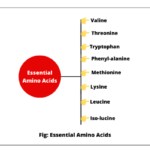30 Indian Constitution MCQ Quiz Questions for Practice
Welcome to this challenging Indian Constitution MCQ quiz! In this quiz, we’ve compiled 30 top multiple-choice questions based on the development of the Indian Constitution. These MCQ quizzes will test your knowledge in Indian Constitution and boost your preparation for UPSC, SSC, Railway, and State PCS exams.
So, are you ready to score 30/30? Let’s find out how well you really know the development of the Indian Constitution. Let’s begin with question number 1.👇
1. Who was regarded as the Father of the Science of Politics in the world?
A. Plato
B. Aristotle
C. Socrates
D. Kautilya (Chanakya)
b
Aristotle, a world famous Greek philosopher and student of Plato, is widely regarded as the Father of Political Science or Father of the Science of Politics. He was the first to systematically study political systems and governments. He wrote extensively on the subject in his works like Politics and Nicomachean Ethics.
2. Who was regarded as the first political thinker of India?
A. Chanakya
B. Ashoka
C. Manu
D. Mahavira
a
Chanakya, also known as Kautilya or Vishnugupta, is regarded as the first political thinker of India. He was a philosopher, royal advisor, teacher, jurist, and economist. He was the chief advisor and mentor to Emperor Chandragupta Maurya. His famous book is Arthashastra, a well-known book of Indian Polity.
3. Who first put forward the idea of a Constituent Assembly for India?
A. Jawaharlal Nehru
B. B.R. Ambedkar
C. Mahatma Gandhi
D. M.N. Roy
d
Manabendra Nath Roy was the first person to put forward the idea of a Constituent Assembly for India in 1934. He was a prominent Indian revolutionary, political theorist, and founder of the Communist Party of India. Later, the Indian National Congress (INC) officially demanded a Constituent Assembly in 1935, and the British government finally accepted the demand in the August Offer of 1940.
4. In 1938, who declared on behalf of the Indian National Congress that the Constitution of free India must be framed without outside interference, by a Constituent Assembly elected on the basis of adult franchise?
A. Mahatma Gandhi
B. B.R. Ambedkar
C. Jawaharlal Nehru
D. Subhas Chandra Bose
c
In 1938, Jawaharlal Nehru, on behalf of the Indian National Congress (INC), made a historic declaration that the Constitution of free India must be framed without any outside interference. He insisted that it should be done through a Constituent Assembly elected on the basis of adult franchise (universal adult suffrage).
5. In 1942, which British Cabinet member came to India with a draft proposal for framing an independent Indian constitution to be adopted after World War II?
A. Lord Mountbatten
B. Sir Stafford Cripps
C. Clement Attlee
D. Winston Churchill
b
In 1942, Sir Stafford Cripps, a member of Cabinet came to India with draft proposal of British government on the framing of an independent Indian constitution to be adopted after World War II. However, the Cripps proposals were rejected by the Muslim League which wanted India to be divided into two autonomous states with two separate Constituent Assemblies.
6. The Supreme Court of India under British rule was set up by which Act?
A. Pitt’s India Act, 1784
B. Charter Act of 1813
C. Regulating Act of 1773
D. Government of India Act, 1858
c
The Regulating Act of 1773 had established the first Supreme Court of India at Calcutta under British rule.
7. The Regulating Act of 1773 was passed by the British Parliament in order to
- Establish the parliamentary control over the administration of the East India Company’s territory in India.
- Make the Governor of Bengal as the Governor General of Bengal for all three Presidencies of Calcutta, Bombay, and Madras.
- End of dual system of administration in India
Which of these statements are correct?
A. 1, 2 and 3
B. 1 and 2
C. 2 and 3
D. 1 and 3
a
All statements are correct.
8. Which Governor of Bengal became the first Governor-General of Bengal under the Regulating Act of 1773?
A. Lord Clive
B. Warren Hastings
C. Lord Cornwallis
D. William Bentinck
b
Warren Hastings was the first Governor-General of Bengal under the Regulating Act of 1773.
9. Which new council was created under the Regulating Act of 1773 to assist the Governor-General of Bengal?
A. Executive Council of Four Members
B. Legislative Council of India
C. Privy Council
D. Advisory Board
a
Under the Regulating Act of 1773, the Executive Council of four members was created to assist the Governor-General of Bengal. This council was tasked with supporting the Governor-General in his administrative duties.
10. Who was the first Chief Justice of the Supreme Court established in Calcutta under British rule in 1774?
A. William Jones
B. Charles Cornwallis
C. Warren Hastings
D. Sir Elijah Impey
d
Sir Elijah Impey was appointed as the first Chief Justice of the Supreme Court of Judicature at Fort William in Calcutta in 1774, established under the Regulating Act of 1773. Other three judges were Chambers, Limenster, and Hyde.
11. In which year was Pitt’s India Act passed?
A. 1773
B. 1784
C. 1793
D. 1813
b
Pitt’s India Act was passed in 1784 to improve upon the provisions of the Regulating Act of 1773 and to bring the East India Company’s administration under the control of the British government.
12. Pitt’s India Act of 1784 established which of the following bodies to control the East India Company?
A. Board of Trade
B. Board of Directors
C. Board of Control
D. Council of India
c
The Board of Control was established by Pitt’s India Act of 1784 to oversee the civil, military, and revenue affairs of the East India Company. Court of Directors was allowed to manage the commercial affairs.
13. Pitt’s India Act is associated with which British Prime Minister?
A. William Pitt the Younger
B. Robert Clive
C. Lord North
D. Lord Curzon
a
Pitt’s India Act is associated with the British prime minister William Pitt the Younger, when the act was passed in 1784.
14. What system of governance was introduced by Pitt’s India Act, 1784?
A. Federal system
B. Presidential system
C. Provincial autonomy
D. Dual system of control
d
The Act introduced a dual system of governance in India: Board of Control and Court of Directors.
15. With reference to the colonial period of India, the trade monopoly of the East India Company was ended by which of the following acts?
A. The Regulating Act of 1773
B. Pitt’s India Act of 1784
C. The Charter Act of 1813
D. The Charter Act of 1833
c
The Charter Act of 1813 ended the East India Company’s monopoly over Indian trade, except for tea and trade with China.
16. Which of the following was not a feature of the Charter Act of 1813?
A. End of trade monopoly of East India Company in India.
B. The Christian missionaries were allowed to spread their religion in India.
C. To spend one lakh rupees every year on the education of Indians.
D. Establishment of the Supreme Court at Bombay
d
The Supreme Court at Bombay was established later, not under this Act. The Charter Act of 1813 focused on trade, missionary activity, and education.
17. The commercial activities of East India Company finally put to an end by which act of the following?
A. The Charter Act of 1793
B. The Charter Act of 1813
C. The Charter Act of 1833
D. The Charter Act of 1853
c
The Charter Act of 1833 ended the monopoly trade of East India Company with China, making it a purely administrative and political body, not a commercial enterprise.
18. The Charter Act of 1833 made which of the following the sole legislative authority in India?
A. Court of Directors
B. Governor-General of Bengal
C. Governor-General of India
D. Board of Control
c
The Charter Act of 1833 made the “Governor-General of India” the sole legislative authority in India. It made the Governor General of Bengal as Governor General of India.
19. Who was the first Governor-General of India under the Charter Act of 1833?
A. Lord Dalhousie
B. Lord Cornwallis
C. Warren Hastings
D. Lord William Bentinck
d
Lord William Bentinck became the first Governor-General of India as per the Charter Act of 1833, which expanded his powers beyond Bengal to cover all British territories in India.
20. Consider the following Acts:
- The Regulating Act
- Pitt’s India Act
- The Charter Act
- Indian Council Act
What is the correct chronological sequence of these Acts?
A. 1, 2, 3, 4
B. 2, 1, 3, 4
C. 4, 3, 2, 1
D. 3, 4, 2, 1
a
The correct chronological sequence of these Acts are 1, 2, 3, 4.
21. Which Charter Act declared the slavery system in India illegal, eventually leading to its abolition in 1843?
A. Charter Act of 1813
B. Charter Act of 1833
C. Charter Act of 1853
D. Government of India Act, 1858
b
The Charter Act of 1833 marked a significant step towards social reform in India by declaring slavery illegal under British rule.
22. Who was appointed as the Chairman of the First Law Commission in 1835?
A. Lord William Bentinck
B. Sir Charles Metcalfe
C. Lord Cornwallis
D. Lord Macaulay
d
In 1835, Lord Thomas Babington Macaulay was appointed as the Chairman of the First Law Commission in India. This commission was established under the Charter Act of 1833 to codify Indian laws.
23. What was a major change introduced by the Charter Act of 1853 in the system of Indian legislation?
A. Separation of judiciary and executive.
B. Establishment of Federal Legislature
C. Separation of legislative and executive functions of the Governor-General’s Council.
D. Abolition of Governor-General post.
c
The Charter Act of 1853 separated the legislative and executive functions of the Governor-General’s Council, creating a Legislative Council for the first time in India.
24. Which new system of recruitment was introduced for the Indian Civil Services by the Charter Act of 1853?
A. Nomination by the British Parliament
B. Hereditary appointments
C. Open competition system of selection and recruitment based on merit
D. Direct recruitment from Indian universities
c
The Act introduced open competitive examinations for recruitment to the Indian Civil Services, replacing the earlier system of nomination.
25. How many members were added to the Indian (Central) Legislative Council under the Charter Act of 1853?
A. 4
B. 6
C. 12
D. 22
b
The Charter Act of 1853 added six new members to the Governor-General’s Legislative Council as legislative members (called law members), making it the first Indian Central Legislative Council.
26. Which was the last Charter Act passed by the British Parliament for the East India Company?
A. Charter Act of 1813
B. Charter Act of 1833
C. Charter Act of 1853
D. Government of India Act, 1858
c
The Charter Act of 1853 was the last Charter Act passed by the British Parliament to renew the East India Company’s rule. After the Revolt of 1857, the Company’s rule ended with the Government of India Act, 1858.
27. Which of the following exercised the most profound influence in framing the Indian Constitution?
A. The Government of India Act, 1935
B. The British Constitution
C. The U.S. Constitution
D. The Irish Constitution
a
The Government of India Act, 1935 had the most profound influence on the framing of the Indian Constitution.
28. In the Federation under the Government of India Act, 1935, the residuary powers were given to the
A. Provincial Legislatures
B. Federal Legislature
C. Governor-General
D. British Parliament
c
Under the Government of India Act, 1935, the powers were divided into three lists: Federal List, Provincial List, and Concurrent List. However, the residuary powers — those not mentioned in any list — were vested in the Governor-General.
29. By virtue of which Act was dyarchy introduced in India?
A. Indian Councils Act, 1909
B. Government of India Act, 1919
C. Government of India Act, 1935
D. Charter Act of 1833
b
Dyarchy was introduced in India through the Government of India Act, 1919, also known as the Montagu-Chelmsford Reforms.
30. In which year did the Parliament adopt the Indian Constitution?
A. 1947
B. 1948
C. 1949
D. 1950
c
The Constituent Assembly of India formally adopted the Indian Constitution on 26th November 1949. However, it came into effect on 26th January 1950.
Quiz Results
Total Questions: 0
Correct Answers: 0
Incorrect Answers: 0
Score: 0%






